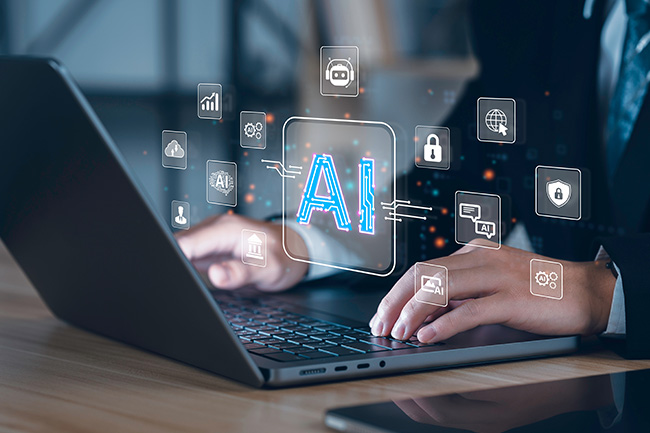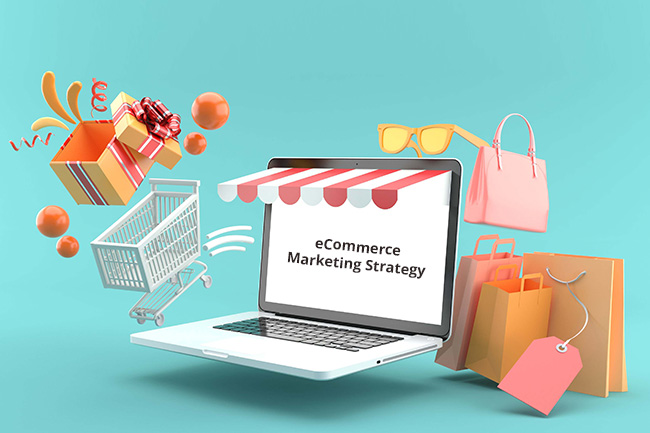Generative AI has emerged as a game-changer in the marketing industry, revolutionizing content creation and personalization. This AI technology enables marketers to generate unique and highly personalized content at scale, enhancing customer experiences and engagement. It also has the potential to drastically use AI to impact the future of work.
By automating creative processes, it saves time and resources, leading to more efficient campaign deployment and reduced costs. Generative AI’s capabilities extend to producing high-quality visual content and human-like written content through Natural Language Generation (NLG).
As its adoption continues to grow, it’s value is expected to reach USD 51.8 billion by 2028. Businesses are increasingly recognizing the significance of AI in driving revenue growth, with 35% of marketers already utilizing AI for content personalization.
As AI continues to play a pivotal role in marketing strategies, it promises to shape the future of customer engagement and marketing campaigns.
Exploring Generative AI in Marketing
Generative AI in marketing is a cutting-edge technology that utilizes artificial intelligence algorithms to produce creative and original content. It goes beyond traditional AI by generating unique materials like images, text, and videos based on learned patterns from existing data. In marketing, this technology has diverse applications, such as generating personalized content for individual customers, improving customer engagement, and crafting targeted advertisements and product recommendations.
Generative AI’s impact on marketing is profound, revolutionizing content creation and enhancing personalization. By automating content generation, marketers can focus on strategic planning and creativity. This innovative approach enables marketers to deliver personalized content at scale, creating a deeper connection with customers and improving overall marketing effectiveness. As generative AI evolves, it will continue to reshape marketing strategies, delivering more impactful and engaging experiences for customers.
Different Types of Generative AI Models
Generative AI models come in various types, each with its unique approach to generating content. Some of the prominent types include:
- Variational Autoencoders (VAEs): Probabilistic models used for image and text generation by learning to represent and reconstruct input data from a latent space.
- Generative Adversarial Networks (GANs): Neural networks with a generator and discriminator that compete to create realistic images, audio, and video content.
- Recurrent Neural Networks (RNNs): Suited for sequential data like natural language generation and text completion tasks.
- Transformers: Powerful models for sequential data, revolutionizing natural language processing, and commonly used in language generation tasks and chatbots.
- Autoregressive Models: Generate content by sequentially predicting parts of data, such as PixelCNN for images and WaveNet for audio.
- GPT (Generative Pre-trained Transformer) Models: Pre-trained language models with transformer architectures for tasks like writing articles or answering questions. ChatGPT is a great example of this model.
Exploring the Variety and Sources of Generative AI Text Models
Generative AI text models are a diverse set of tools used to create and generate text. Some common types include:
- Recurrent Neural Networks (RNNs): These models work well with sequential data, making them suitable for tasks like text completion and language generation.
- Transformers: Transformers have revolutionized natural language processing and enable powerful text translation, chatbots, and more.
- GPT (Generative Pre-trained Transformer) Models: These language models are pre-trained and widely used for tasks like article writing and question answering.
- BERT (Bidirectional Encoder Representations from Transformers): BERT models understand context in text, making them great for generating context-aware content.
- Autoencoders: Although mainly used for data compression, autoencoders have applications in generating text.
- Variational Autoencoders (VAEs): VAEs are good for generating diverse and realistic text and language sequences.
- Reinforcement Learning-Based Models: These models learn from rewards and penalties and are used for generating text with specific desired characteristics.
Top Generative AI Marketing Findings for 2023
Here are some key areas where it is making a significant impact:
- Hyper-Personalization: AI creates personalized experiences for individual audiences, improving revenues and customer satisfaction in retail and marketing.
- Conversational AI: Generative models power intelligent virtual assistants and chatbots, providing human-like interactions for better customer support.
- AI for Scientific Research: Accelerates data analysis in drug discovery, materials science, and energy research, leading to insights and discoveries.
- Image Generators: AI synthesizes photorealistic artwork, 3D models, and characters for gaming, fashion, and marketing.
- Code & App Builders: AI automates software development workflows, reducing time and costs.
- Video Production: AI synthesizes videos, animations, and gifs, saving resources for media, marketing, and film industries.
- Generative Design: AI-based 3D design generators optimize product design and customization for industries like architecture and aerospace.
- Speech Synthesis: Text-to-speech conversions enhance voice assistants, chatbots, and voice-interactive services.
- Intelligent Process Automation: AI automates repetitive tasks and enhances decision-making in various industries.
- Generative Music: AI music generators create personalized soundscapes and dynamic soundtracks for various applications.
How Marketers Can Unlock the Power of Generative AI
Marketers can unlock the potential of generative AI to revolutionize their strategies and drive audience engagement. By leveraging AI-powered hyper-personalization, they can deliver tailored content and product recommendations to individual customers based on their preferences and behaviors.
The use of generative AI tools enables creative content generation, producing diverse and compelling visuals, videos, and written materials that resonate with specific target audiences. Implementing AI-driven chatbots and virtual assistants enhances customer support by providing instant and personalized responses to queries. Real-time content optimization allows marketers to refine their messaging based on customer interactions and feedback.
AI also plays a significant role in design and branding, empowering businesses to create visually appealing and consistent graphics and promotional materials. With the help of AI analytics, marketers gain valuable insights from customer data, enabling data-driven decision-making and more effective targeting.
Automated A/B testing powered by generative AI streamlines the testing of various marketing strategies, helping businesses identify the most effective approaches. Content localization becomes effortless with AI-driven translation and localization tools, allowing marketers to adapt content for different regions and languages seamlessly.
The overall customer experience is enhanced through personalized content delivery at every touchpoint. By embracing generative AI, marketers stay ahead of the competition, driving customer engagement and achieving higher ROI on their marketing efforts.
Top Generative AI Tools you Should Leverage Right Now
- OpenAI’s GPT-3: This powerful language model enables natural language processing and generation, making it a versatile tool for chatbots, content creation, and personalized customer interactions.
- DALL-E: Developed by OpenAI, DALL-E generates stunning images from textual descriptions, making it perfect for creating visual content and graphics.
- RunwayML: This user-friendly platform allows marketers to experiment with various generative AI models, including text, image, and music generation, without requiring extensive coding knowledge.
- Google’s DeepDream: Ideal for artistic and creative applications, DeepDream can produce fascinating and surreal images using deep neural networks.
- Artbreeder: A fun and accessible tool for image synthesis, Artbreeder enables users to blend and evolve images to create unique and visually appealing artwork.
- Botsify: This AI-powered chatbot platform simplifies chatbot creation for websites and social media, enhancing customer support and engagement.
- Vidnami: An efficient video creation tool that utilizes AI to automate video production, including text-to-speech narration and intelligent scene selection.
- Phrasee: Optimizing email marketing campaigns is made easier with Phrasee’s AI-powered copywriting, generating compelling subject lines and content to boost open and click-through rates.
- Zyro: This website builder employs AI algorithms to design and customize websites quickly and efficiently, saving time and effort for marketers.
- Lumen5: Ideal for social media marketing, Lumen5 automates video creation by transforming blog posts and articles into engaging videos using AI and pre-designed templates.
Conclusion
Generative AI tools are reshaping the marketing landscape, offering endless possibilities for creativity, personalization, and efficiency. From GPT-3 and DALL-E for natural language and image generation to RunwayML’s user-friendly experimentation, marketers now have accessible AI solutions.
Tools like DeepDream, Artbreeder, Botsify, Vidnami, Lumen5, Phrasee, and Zyro further empower marketers in content creation, chatbots, video production, copywriting, and website design. Embracing these top generative AI tools enables marketers to optimize campaigns, engage customers, and deliver personalized experiences, shaping a more innovative and impactful future for marketing.





Tell us your thoughts in the comments